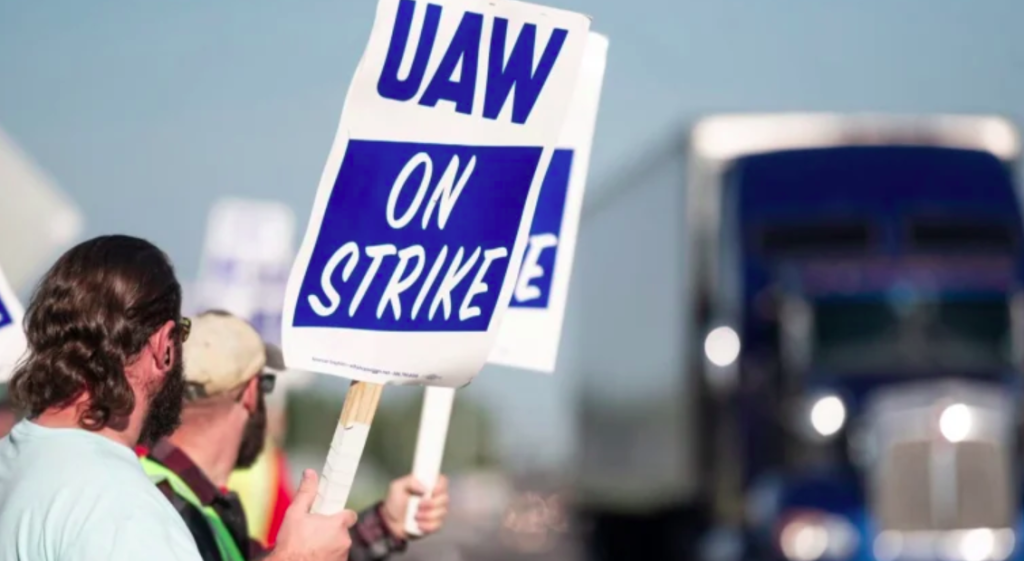The recent United Auto Workers (UAW) strike against the Big Three automakers has raised questions about its repercussions on the broader economy. While it’s challenging to predict the full extent of these effects, they are contingent upon the strike’s scale and duration, as well as its unique characteristics.

The Scope of the Strike
Initially, the strike involved just three assembly plants, one from each of the major automakers: Ford, General Motors, and Stellantis (Chrysler’s parent company). Approximately 13,000 workers are participating, making it relatively contained compared to previous strikes.
1. Impact on Striking Workers
Striking employees won’t receive regular paychecks during the strike. Instead, they will receive $500 per week in strike pay from the union, which covers roughly 40% of their lost wages on average. This reduction in income could lead to decreased spending in the communities where these workers reside, potentially affecting local businesses.
2. Effects on Supply Chains
Automakers rely on a network of suppliers for parts and components. While the strike may eventually impact these suppliers, immediate disruptions are less likely. Given previous parts shortages, automakers may be cautious about canceling orders. Additionally, labor market constraints may dissuade suppliers from laying off workers immediately.
However, if the strike persists for eight to ten weeks, its effects on supply chains could become more pronounced.
3. Implications for Car Buyers
While overall vehicle inventories have improved over the past year, specific models from the Big Three automakers might become scarcer due to the strike. Ford has approximately two months’ worth of vehicles in stock, GM slightly less, and Stellantis slightly more. Although there is a cushion, it is not unlimited.
This potential scarcity could exert upward pressure on new-car prices, which rose 0.3% in August after several months of stability or decline. It’s worth noting that nonunion car manufacturers like Honda and Volkswagen will continue production during the strike.
4. Impact on Economic Growth
The UAW strike, even if prolonged, is unlikely to have a significant and lasting effect on the broader economy. Estimates suggest it could shave 0.2% off fourth-quarter GDP growth, primarily due to reduced consumer spending.
This impact is relatively small in the context of other economic challenges, such as rising oil prices, increased mortgage rates, the expiration of the student loan payment moratorium, and the potential for a government shutdown.
Furthermore, the auto industry’s localized nature means that communities, where carmakers are concentrated, might feel the brunt of the strike, but the broader economy should remain resilient.
In conclusion, while the UAW strike has the potential to disrupt various aspects of the economy, its overall impact is expected to be limited. However, the strike’s duration and intensity could influence the industry’s future, especially as automakers navigate the transition to electric vehicles.



